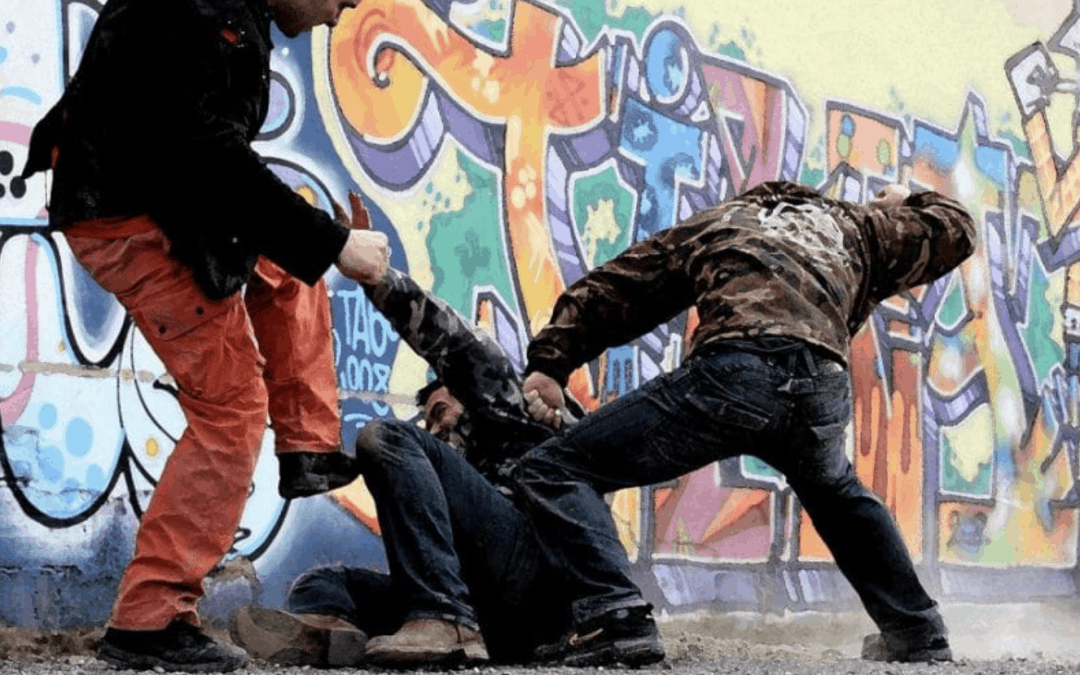UNCOMFORTABLE TERRAIN
Preventive measures
The last thing we want is to go to the ground, that’s why our priority is to initially teach preventative measures.
The types of preventive measures that we teach are; how to fall, how to roll and how to break-fall.
Many people get injured when hitting concrete, whether it’s because someone sent them there or because they stumbled, slipped or fell whilst walking/running/riding a bike…
A roll converts the fall into a round motion and the break-fall aims to reduce the shock and absorb the impact of the body with the ground.
Secondly we teach ‘safe space,’ in this specific context it involves preventing the attacker taking you to the ground.
Examples include; distancing, blocking the attackers body from getting close to you and counterattacking with maximum efficiency, or *Retzev
*Continuous motion striking
The last phase of the preventive measures that we teach is how to avert the assailant from reaching you if they are standing and you are on the ground.
This is achieved by training moves on the ground such as, turning with the hips and legs towards the assailant, kicking from the ground, deflecting strikes, and learning how to get up as fast and safely as possible (to the most suitable direction or exit) whether attacking the opponent immediately, picking up an object to defend yourself, or running away.
Use of the environment
In every scenario related to street self defence we strongly encourage and teach utilising the environment.
This means that we; Identify what we are surrounded by and establish a mental map of potential exit points.
We also scan the area to identify any objects lying around that could be used as weapons.
Bear in mind that an attacker could use those objects to attack you.
Multiple attackers & hidden weapons
Once you are on the ground you run a high risk of serious injury, should it turn out to be a multi-threat environment, or the attacker has a weapon concealed in his/her clothing.
We seriously need to consider that grappling (on the street), is not combat-efficient. It requires us to use up a tremendous amount of energy. Rolling around on the ground with an assailant for two minutes is extremely stress inducing and depletes far more energy than engaging in a stand-up fight of the same duration.
Therefore, it is essential that we arduously train both anti-grappling and ground fighting techniques. Both in context of a one on one scenario and when several people are attacking you.
Once we have trained these techniques we will have a better understanding of our opponents strategies and tactics.
Ultimate Considerations
Our primary goal should be to remain standing, however, we must be prepared to fight on the ground. If the fight goes to ground our key objective is not to remain on the ground but to apply effective techniques that fend off an attacker, minimise damage and get back to our feet as quickly as we can.
How we at Guardian Defence consolidate the trained techniques
- Incorporate takedowns when sparring.
- Introduce grappling techniques within stress inoculation drills.
To find out more about the details on how we train and the principles behind them, come to one of our classes.


Thank you for this timely reminder, Dave. I’ve copied this post as it is really informative and gives me something to work towards. Staying standing. And if that’s not always the case, learning to get up in a speedy manner. There is a shock when you fall and it takes a while to reorient yourself. Just that couple of seconds can make you vulnerable so I would think that with the Krav Maga method of repetition and muscle memory, you have a better chance.
I did write an earlier post which got lost because of poor internet.
The structure of the course, with the stress inoculation is something I, personally, have found invaluable.